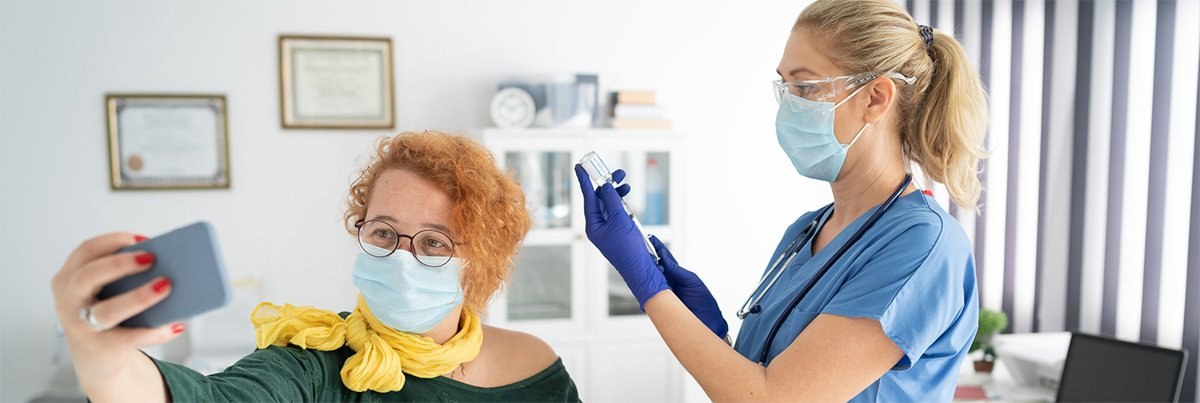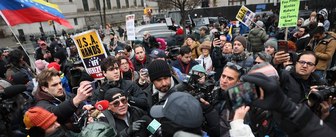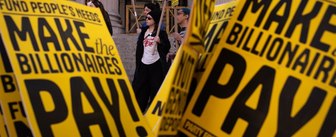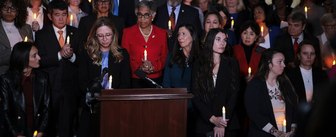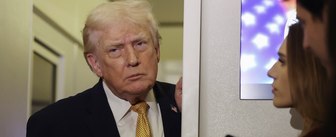As the rate of new COVID–19 vaccinations has slowed, health officials have grown more creative in efforts to entice the unvaccinated to get their shot. In Ohio, the offer of a chance to win $1 million helped boost new vaccinations to their highest rate in three weeks.
New YouGov polling - conducted prior to the announcement of the Ohio lottery - shows that while such efforts may do little to dissuade the most hardcore of vaccine resistant Americans, the various nudges and incentives being offered in some areas have the potential to motivate many Americans still on-the-fence about getting vaccinated.
The most recent Yahoo News/YouGov poll, for example, asked unvaccinated Americans whether a series of incentives would make them more likely to get vaccinated. Not surprisingly, the various enticements were most attractive to those already planning to get vaccinated (11% of adults overall), especially the prospect of getting easier access to things like travel, sports, entertainment and restaurants (would make 63% of this group more likely to get a shot), receiving $100 in exchange (62%), or the option to be vaccinated “at my doctor’s office” (58%). Nearly all (91%) who say they are planning to get vaccinated respond favorably to at least one of eight potential incentives tested.
These incentives are far less attractive to those “not sure about getting vaccinated” (13% of all adults). The highest scoring inducements to those on the fence are receiving $100 (18% of the unsure would be more likely in this case), being no longer required to wear a mask in public (18%), or if vaccination were required by an employer (17%). Still, nearly half (42%) of Americans on-the-fence about vaccines responded favorably to at least one of the eight potential incentives.
The story is different for the hardcore vaccine resisters. Among those who do not intend to get vaccinated (19% of all adults), none of the incentives draws better than single digit interest. In fact, just 17% say any of the eight incentives would make them more likely to be vaccinated.
While these measures are unlikely to move those ardent vaccine foes, their promise is in motivating other Americans whose situation is better characterized as vaccine hesitance than resistance. And, as other findings from recent Yahoo surveys show, there are still many such hesitant Americans.
Profiling unvaccinated Americans
Let’s examine the three groups of unvaccinated Americans more closely.
I plan to get vaccinated (11% overall): While they say they “plan to get vaccinated,” and most (69%) are still worried about COVID–19, many may need more prodding. While 46% say, on a follow-up question, they will get vaccinated “as soon as it is available to me”, slightly more are either still waiting to see “what happens to others before deciding” (37%) or are unsure when they will get vaccinated (17%).
This group is not monolithic in its reasons for not being vaccinated. Fewer than half offer simple barriers – 30% say they lack easy access to vaccination and 11% say they can’t get time off from work. But many of the rest say they do not trust the COVID–19 vaccines (12%), are not worried about getting COVID–19 (8%) or can offer no reason for not being vaccinated (20%).
In short, despite “plans” to be vaccinated, nearly all could benefit from either more help or more prodding.
This group is young – 45% are under 30, and 78% are under 44 – and less politically engaged and less well-educated than those already vaccinated. Nearly three-quarters (73%) say they did not vote for president in 2020, though Biden won more support (16%) than Trump (10%) from those who did. They are more moderate (36%) than liberal (30%) or conservative (20%). The group is disproportionately black (14%) and Hispanic (22%); only about half (49%) are white. Just 22% have a college degree.
I’m not sure about getting vaccinated (13% overall): While clearly hesitant about getting vaccinated, this group otherwise belies easy categorization. It splits almost evenly between those who are worried about COVID–19 (46%) and those who are not (54%). Asked when they will get vaccinated, a few say “never” (16%), but most are either unsure (49%) or still waiting to see how vaccines affect others (33%).
About half say they have not been vaccinated because they don’t trust the COVID–19 vaccines (43%) or are not worried about getting COVID–19 (8%), but nearly a third (32%) can offer no reason for why they’re not vaccinated.
Most did not vote for president in 2020 (57%), but those who did favored Trump (30%) more often than Biden (12%). They are of all political affiliations – 28% identify or lean Republican, 23% Democratic, 26% independent. They are disproportionately black (16%) and Hispanic (24%) and between 30 and 64 years of age (71%). Just 17% have a college degree.
I will not get vaccinated (19% overall): These are hardcore vaccine resisters. Nearly all (95%) say they will “never” get vaccinated. Three out of four (75%) say they are not worried about COVID–19; 46% are not worried at all. Better than half (60%) say most Americans are overreacting to the risks of COVID–19.
Nearly all say they are not vaccinated either because they don’t trust the COVID–19 vaccines (62%), and more are not worried about getting coronavirus (17%) than the other groups.
Nearly all either voted for Donald Trump in 2020 (50%) or did not vote for president (45%). Better than half (55%) identify or lean Republican, just 15% are Democrats. They are disproportionately white (70%) and middle-aged (41% are aged 45–64). Just 22% have a college degree.
In short, these results confirm survey results elsewhere, such as those of the Kaiser Family Foundation, which finds the unvaccinated “have a range of questions and concerns about the vaccine that require different strategies to address.”
It may take a broad range of approaches and incentives, but if 90% of those still planning to be vaccinated and 40% of those who say they are unsure can be prodded to get at least one vaccine dose – targets consistent with the results above – it would mean a vaccination rate above 70% of the adult population, the goal recently set by President Biden for July 4.
See the toplines and crosstabs from this Yahoo News/YouGov Poll
Methodology: The Yahoo News survey was conducted by YouGov using a nationally representative sample of 1,561 U.S. adults interviewed online from May 11 - 13, 2021. This sample was weighted according to gender, age, race and education based on the American Community Survey, conducted by the U.S. Bureau of the Census, as well as 2020 presidential vote (or non-vote) and voter registration status. Respondents were selected from YouGov’s opt-in panel to be representative of all U.S. adults. The margin of error is approximately 2.6 percent.
Image: Getty
